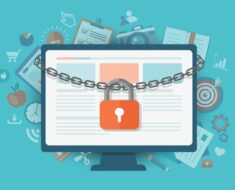Cybercrime is a never-ending game. Cybercriminals are constantly thinking of new ways to sneak past veils of digital security whereas their good-hearted, computer-skilled counterparts quickly come up with remedies to render those technologies ineffective.
New forms of malware are released each and every day. The base structure of such new kinds of malware is always the skeleton of one of a few kinds of malware that already exists. Cybercriminals simply make a few adjustments to these tried-and-true forms of malware and send them on their way.
One of the most recent outbreaks of malware has infected the computers of 1,200 individuals and business entities and taken all of their credentials. The malware is a variation of Separ, a popular tool used to swipe others’ credentials, the original form of which has been used since 2017, information that comes from a tried-and-true researcher who works at Deep Instinct, a well-known, powerful digital security company.
This form of Separ has spread so prolifically in the past handful of weeks because it effectively makes its way through firewalls and software used to detect malware. The original Separ malware was modified to contain a truckload of scripts and files that can be executed. These files and scripts are the same ones that computers regularly utilize on a daily basis. Although they can be used for malicious purposes, they are widely regarded as safe because the world of cybersecurity has not had much of a problem with such a unique build of the Separ credentials swiper.
The world of cybersecurity has seen an industry-wide push to build malware with applications, utilities, and widgets that computers regularly use. This type of malware effectively adopts the language of computers, which is used by pieces of malware to sneak their way inside computers and computer networks.
This version of Separ is said to initially arrive in the form of a regular PDF document. Curious and unknowing computer users click on the PDF file to open it, which immediately kicks a chain reaction into effect that is composed of files and applications that are only utilized by computers’ system administrators.
As of right now, the most recent flavor of the Separ malware has wrongfully sourced the credentials of more than 1,200 entities, which are spread across both individuals and business entities.
The number of computers that are infected with the Separ malware is rising steadily, which is almost certain to increase the number of credentials stolen.
Dil Bole Oberoi





